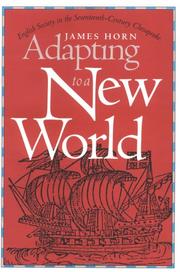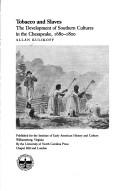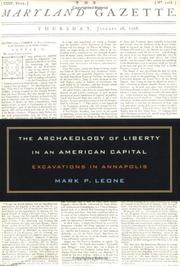| Listing 1 - 10 of 12 | << page >> |
Sort by
|

ISBN: 0807838314 1469600528 9781469600529 0807821373 9780807821374 0807846147 9780807846148 Year: 1994 Publisher: Chapel Hill Published for the Institute of Early American History and Culture, Williamsburg, Virginia, by the University of North Carolina Press
Abstract | Keywords | Export | Availability | Bookmark
 Loading...
Loading...Choose an application
- Reference Manager
- EndNote
- RefWorks (Direct export to RefWorks)
British --- History --- Chesapeake Bay Region (Md. and Va.) --- Kent (England) --- Gloucestershire (England) --- Emigration and immigration
Book
ISBN: 1479827258 9781479827251 9781479837298 1479837296 9781479837298 Year: 2018 Publisher: New York New York University Press
Abstract | Keywords | Export | Availability | Bookmark
 Loading...
Loading...Choose an application
- Reference Manager
- EndNote
- RefWorks (Direct export to RefWorks)
Reveals the little known history of one of history’s most famous maps – and its makerTucked away in a near-forgotten collection, Virginia and Maryland as it is Planted and Inhabited is one of the most extraordinary maps of colonial British America. Created by a colonial merchant, planter, and diplomat named Augustine Herrman, the map pictures the Mid-Atlantic in breathtaking detail, capturing its waterways, coastlines, and communities. Herrman spent three decades travelling between Dutch New Amsterdam and the English Chesapeake before eventually settling in Maryland and making this map. Although the map has been reproduced widely, the history of how it became one of the most famous images of the Chesapeake has never been told. A Biography of a Map in Motion uncovers the intertwined stories of the map and its maker, offering new insights into the creation of empire in North America. The book follows the map from the waterways of the Chesapeake to the workshops of London, where it was turned into a print and sold. Transported into coffee houses, private rooms, and government offices, Virginia and Maryland became an apparatus of empire that allowed English elites to imaginatively possess and accurately manage their Atlantic colonies. Investigating this map offers the rare opportunity to recapture the complementary and occasionally conflicting forces that created the British Empire. From the colonial and the metropolitan to the economic and the political to the local and the Atlantic, this is a fascinating exploration of the many meanings of a map, and how what some saw as establishing a sense of local place could translate to forging an empire.
Cartography --- Cartographers --- History. --- Herrman, Augustine, --- Virginia --- Maryland --- Chesapeake Bay Region (Md. and Va.) --- History
Book
ISBN: 0813158850 9780813158853 1322596824 9781322596822 0813132622 9780813132624 Year: 1990 Publisher: Lexington, Kentucky : The University Press of Kentucky,
Abstract | Keywords | Export | Availability | Bookmark
 Loading...
Loading...Choose an application
- Reference Manager
- EndNote
- RefWorks (Direct export to RefWorks)
The figure of an old man poling a skiff toward shore against the evening light engaged Susan Brait to learn about Chesapeake Bay, and it is that image which opens this her book on the oystermen of the Bay and the sapping of their traditional life, and even the bounty of the Bay itself, by the demands of American society.With directness and poetic economy Brait takes the reader into the life of the Bay and into the complex relationships that affect oysters and those who make their living from them. Her account weaves easily from the daily work of oystermen to the natural forces that have shaped
Oyster culture --- Fishers --- Oyster fisheries --- Farming, Oyster --- Oyster farming --- Bivalve culture --- Fisheries --- Anglers --- Fishermen --- Persons --- Chesapeake Bay region (Md. and Va.) --- Chesapeake Bay Region (Md. and Va.) --- E-books --- Sports persons --- Sportspersons
Book
ISBN: 0739176978 9780739176979 9781306151504 1306151503 9780739176962 073917696X 9781498515337 Year: 2013 Publisher: Lanham, Md. Lexington Books
Abstract | Keywords | Export | Availability | Bookmark
 Loading...
Loading...Choose an application
- Reference Manager
- EndNote
- RefWorks (Direct export to RefWorks)
The nation's approach to managing environmental policy and protecting natural resources has shifted from the national government's top down, command and control, regulatory approach, used almost exclusively in the 1970s, to collaborative, multi-sector approaches used in recent decades to manage problems that are generally too complex, too expensive, , and too politically divisive for one agency to manage or resolve on its own. Governments have organized multi-sector collaborations as a way to achieve better results for the past two decades. We know much about why collaboration occurs. We know a good deal about how collaborative processes work. Collaborations organized, led, and managed by grassroots organizations are rarer, though becoming more common. We do not as yet have a clear understanding of how they might differ from government led collaborations. Hampton Roads, Virginia, located at the southern end of the Chesapeake Bay, offers an unusual opportunity to study and draw comparative lessons from three grassroots environmental collaborations to restore three rivers in the watershed, in terms of how they build, organize and distribute social capital, deepen democratic values, and succeed in meeting ecosystem restoration goals and benchmarks. This is relevant for the entire Chesapeake Bay watershed, but is also relevant for understanding grassroots collaborative options for managing, protecting, and restoring watersheds throughout the U.S. It may also provide useful information for developing grassroots collaborations in other policy sectors. The premise underlying this work is that to continue making progress toward achieving substantive environmental outcomes in a world where the problems are complex, expensive, and politically divisive, more non-state stakeholders must be actively involved in defining the problems and developing solutions. This will require more multi-sector collaborations of the type that governments have increasingly relied on for the past two decades. Our approach examines one subset of environmental collaboration, those driven and managed by grassroots organizations that were established to address specific environmental problems and provide implementable solutions to those problems, so that we may draw lessons that inform other grassroots collaborative efforts.
Restoration ecology --- Ecological restoration --- Ecosystem restoration --- Rehabilitation ecology --- Restoration of ecosystems --- Applied ecology --- Citizen participation. --- Réhabilitation (Ecologie) --- Citizen participation --- Chesapeake Bay Region (Md. and Va.) --- Participation des citoyens
Book
ISBN: 1421426552 9781421426556 9781421426549 1421426544 Year: 2018 Publisher: Baltimore
Abstract | Keywords | Export | Availability | Bookmark
 Loading...
Loading...Choose an application
- Reference Manager
- EndNote
- RefWorks (Direct export to RefWorks)
The concept of "shifting baselines"--changes in historical reference points used in environmental assessments--illuminates a foundational challenge when evaluating the health of ecosystems and seeking to restore degraded wildlife populations. In this important book, Victor S. Kennedy examines the problem of shifting baselines for one of the most productive aquatic resources in the world: the Chesapeake Bay. Kennedy explains that since the 1800s, when the Bay area was celebrated for its aquatic bounty, harvest baselines have shifted downward precipitously. Over the centuries, fishers and hunters, supported by an extensive infrastructure of boats, gear, and processing facilities, overexploited the region's fish, crustaceans, terrapin, and waterfowl, squandering a profound resource. Beginning with the colonial period and continuing through the twentieth century, Kennedy gathers an unparalleled collection of scientific resources and eyewitness reports by colonists, fishers, managers, scientists, and newspaper reporters to create a comprehensive examination of the Chesapeake's environmental history. Focusing on the relative productivity and health of its fisheries and wildlife and highlighting key species such as shad, oysters, and blue crab, Shifting Baselines in the Chesapeake Bay helps readers understand the remarkable extent of the Bay's natural resources in the past so that we can begin to understand what has changed since, and why. Such knowledge can help illustrate the Bay's potential fertility and stimulate efforts to restore this pivotal maritime system's ecological health and productivity.
Marine ecosystem health --- Coastal ecosystem health --- Health, Marine ecosystem --- Marine environmental health --- Ocean health --- Ecosystem health --- Coastal environmental health --- Coastal health (Ecosystem health) --- Health, Coastal ecosystem --- Chesapeake Bay (Md. and Va.) --- Environmental conditions.
Book
ISBN: 0801897912 9780801897917 9780801893124 0801893127 Year: 2009 Publisher: Baltimore Johns Hopkins University Press
Abstract | Keywords | Export | Availability | Bookmark
 Loading...
Loading...Choose an application
- Reference Manager
- EndNote
- RefWorks (Direct export to RefWorks)
American historians will find this study both enlightening and surprising.
Brewing --- Distilling industries --- Housewives --- Home economics --- Sex role --- Social classes --- Drinking of alcoholic beverages --- Bars (Drinking establishments) --- Social aspects --- History. --- Chesapeake Bay Region (Md. and Va.) --- Social life and customs

ISBN: 080781671X 0807842249 0807839221 1469601222 9781469601229 9780807816714 9780807842249 9798890885210 Year: 1986 Publisher: Chapel Hill, [North Carolina] ; London, [England] : Published for the Omohundro Institute of Early American History and Culture, Williamsburg, Virginia by the University of North Carolina Press,
Abstract | Keywords | Export | Availability | Bookmark
 Loading...
Loading...Choose an application
- Reference Manager
- EndNote
- RefWorks (Direct export to RefWorks)
Chesapeake Bay (Maryland et Virginie) --- Economic conditions --- Social conditions --- Agriculture --- Economic aspects --- History --- Tobacco industry --- Plantation life --- Slavery --- Abolition of slavery --- Antislavery --- Enslavement --- Mui tsai --- Ownership of slaves --- Servitude --- Slave keeping --- Slave system --- Slaveholding --- Thralldom --- Crimes against humanity --- Serfdom --- Slaveholders --- Slaves --- Country life --- Tobacco manufacture and trade --- Tobacco products industry --- Plant products industry --- Farming --- Husbandry --- Industrial arts --- Life sciences --- Food supply --- Land use, Rural --- History. --- Chesapeake Bay Region (Md. and Va.) --- Social conditions. --- Economic conditions. --- Enslaved persons
Book
ISBN: 9780813052526 0813052521 9780813062860 0813062861 0813063671 0813051819 0813064902 Year: 2018 Publisher: Gainesville : University Press of Florida,
Abstract | Keywords | Export | Availability | Bookmark
 Loading...
Loading...Choose an application
- Reference Manager
- EndNote
- RefWorks (Direct export to RefWorks)
"This study examines the Chesapeake area landscape from the Virginia Algonquian perspective, including its use for hunting, ceremonial worship, settlement, and pilgrimage"--Provided by publisehr.
Indians of North America --- Powhatan Indians --- American aborigines --- American Indians --- First Nations (North America) --- Indians of the United States --- Indigenous peoples --- Native Americans --- North American Indians --- Algonquian Indians --- Social life and customs. --- History. --- Culture --- Ethnology --- Chesapeake Bay Region (Md. and Va.)

ISBN: 9786612357701 1282357700 0520931890 1423755510 1598759353 9780520931893 9781423755517 9781598759358 9780520244504 0520244508 9781282357709 6612357703 Year: 2005 Publisher: Berkeley University of California Press
Abstract | Keywords | Export | Availability | Bookmark
 Loading...
Loading...Choose an application
- Reference Manager
- EndNote
- RefWorks (Direct export to RefWorks)
What do archaeological excavations in Annapolis, Maryland, reveal about daily life in the city's history? Considering artifacts such as ceramics, spirit bundles, printer's type, and landscapes, this engaging, generously illustrated, and original study illuminates the lives of the city's residents-walking, seeing, reading, talking, eating, and living together in freedom and in oppression for more than three hundred years. Interpreting the results of one of the most innovative projects in American archaeology, The Archaeology of Liberty in an American Capital speaks powerfully to the struggle for liberty among African Americans and the poor.
Excavations (Archaeology) --- Elite (Social sciences) --- Power (Social sciences) --- Empowerment (Social sciences) --- Political power --- Exchange theory (Sociology) --- Political science --- Social sciences --- Sociology --- Consensus (Social sciences) --- Elites (Social sciences) --- Leadership --- Social classes --- Social groups --- Archaeological digs --- Archaeological excavations --- Digs (Archaeology) --- Excavation sites (Archaeology) --- Ruins --- Sites, Excavation (Archaeology) --- Archaeology --- History. --- Annapolis (Md.) --- City of Annapolis (Md.) --- Antiquities. --- Social conditions --- african americans. --- american archaeology. --- american revolution. --- annapolis. --- anthropology. --- archaeology. --- benjamin latrobe. --- black. --- ceramics. --- charles carrollton. --- chesapeake bay. --- city planning. --- class. --- excavation. --- fishermen. --- freedom. --- history. --- independence. --- inequality. --- landscapes. --- liberty. --- maritime. --- maryland. --- nonfiction. --- oysters. --- peninsula. --- politics. --- port city. --- poverty. --- printers type. --- social history. --- social science. --- spirit bundles. --- urban. --- william paca. --- working class.

ISBN: 0203754794 1134695381 9781134695386 9781134695454 1134695454 9780415229654 9780415229661 9780203754795 9781134695522 1134695527 0415229650 9780415229654 0415229669 9780415229661 Year: 2016 Publisher: Abingdon, Oxon : Routledge,
Abstract | Keywords | Export | Availability | Bookmark
 Loading...
Loading...Choose an application
- Reference Manager
- EndNote
- RefWorks (Direct export to RefWorks)
Material culture --- Archaeology and history --- Slavery --- Abolition of slavery --- Antislavery --- Enslavement --- Mui tsai --- Ownership of slaves --- Servitude --- Slave keeping --- Slave system --- Slaveholding --- Thralldom --- Crimes against humanity --- Serfdom --- Slaveholders --- Slaves --- Historical archaeology --- History and archaeology --- History --- Culture --- Folklore --- Technology --- Cape of Good Hope (South Africa) --- Chesapeake Bay Region (Md. and Va.) --- Kaapland (South Africa) --- Cape Province (South Africa) --- Kapland (South Africa) --- Cap de Bonne-Espérance (South Africa) --- Kaap die Goeie Hoop (South Africa) --- Kapprovinz (South Africa) --- Kaapprovinsie (South Africa) --- Cape of Good Hope (Colony) --- Eastern Cape (South Africa) --- Northern Cape (South Africa) --- Western Cape (South Africa) --- Antiquities. --- History. --- Enslaved persons
| Listing 1 - 10 of 12 | << page >> |
Sort by
|

 Search
Search Feedback
Feedback About UniCat
About UniCat  Help
Help News
News